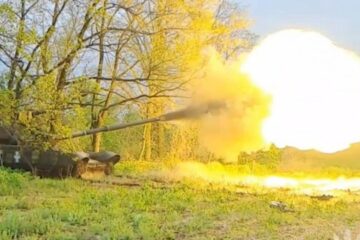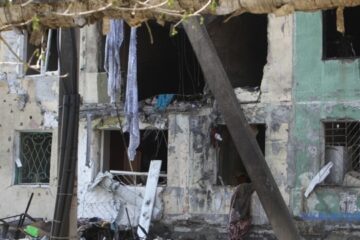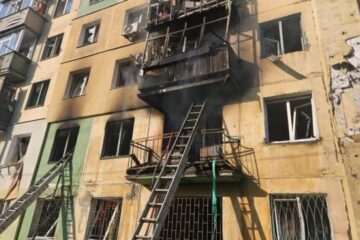This year, the Ukrainian Ministry of Defense is devoting a third of its budget to financing procurements of high-tech weapons systems. It is no exaggeration to say that this was hardly imaginable even just a couple of years ago, and was impossible to imagine three-plus years ago when Russia’s launched its full-scale invasion of Ukraine in 2022. For example, before the great war began, as few as seven drone products were allowed to operate in Ukraine, and not a single ground robotic platform was codified for use in the Armed Forces of Ukraine. Today, there are already hundreds of diverse UAV models operating in Ukraine, in addition to dozens of varieties of ground robotic platforms, electronic warfare systems, signal intelligence systems, software program products…
That being said, approximately 80 percent of the high-tech weapons products currently used by Ukrainian forces on the battlefield have roots in Brave1 (otherwise known as Ukrainian Defense Innovations) – a coordinating platform created by the Government of Ukraine to promote collaborations between stakeholders in high tech defense industries by providing them with organizational, information, and financial support. Subordinated to the Ministry of Digital Transformation, this platform aims to bring together the capabilities of inventing engineers and manufacturers to support the immediate needs of forces on the battlefield.
Ukrinform requested an interview from Natalia Kushnerska, CEO at the Brave1 defense tech cluster, to discuss the startups that changed the Russo-Ukrainian war’s trajectory, the new products that have better chances of becoming eligible for government funding, and the technology competition awaiting us in the near term.
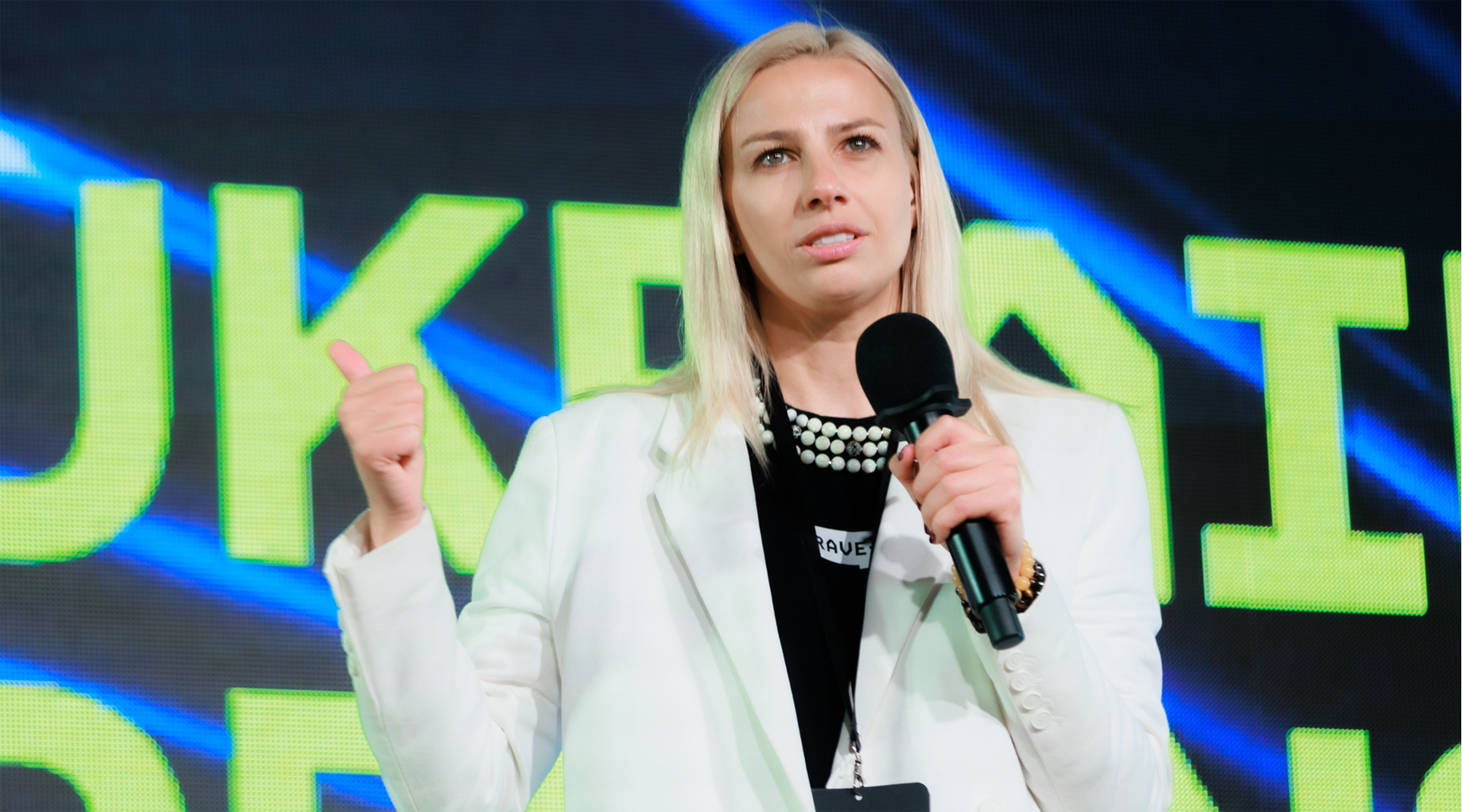
IT IS NOT PEOPLE, BUT ROBOTS THAT SHOULD FIGHT
– Brave1 began its operations April 2023. Would you tell us how it all started, what were the challenges that prompted the need for this initiative, who were the first to join, and what kind of innovative products they brought with them?
– Brave1 was established by an initiative from Deputy Prime Minister Mykhailo Fedorov, joined with the clusters’ founding fathers – the General Staff, the Ministry of Defense, the Ministry of Strategic Industries, the Ministry of Economy, and the National Security and Defense Council. The objective was to set up a platform for facilitating the development of innovative defense technologies in Ukraine.
Following the kickoff of the Army of Drones project, which was launched earlier than the Brave1, it became obvious that there are enough new technologies in Ukraine. However, most manufacturers are facing difficulties bringing their innovative products to the battlefield, difficulties with products’ codification and making them eligible for government procurement, and suchlike. Therefore, the foremost mission facing the Brave1 was to create a liaison between the Private sector and the military, show everything that our manufacturers are capable of and bring these technologies to deployment at the frontline. Everyone may remember that two and a half years ago, most innovations and drones were supplied to the frontline by volunteers at the expense of fundraising. We needed a system that would help connect the capabilities of manufacturers with the needs of the military.
Secondly, the cluster was supposed to facilitate the development of innovative technologies. Given the lack of human resources compared to the aggressor country, our central motivation is to make robots fight in place of humans.
So, we started providing grants to manufacturers, organizing trials at proving grounds, supporting the products’ codification process, organizing demo days for representatives of the Ministry of Defense and the General Staff so that they could see find new contracting opportunities, etc.
The first products we focused on were ground robotic systems. Before the Brave1 cluster began operating in Ukraine, none of ground robotic platforms were codified for use in Ukraine. Nowadays, more than five dozen new products have been codified and brought to the battlefield. This business is crucial in that robotic platforms perform a broad variety of different roles at the frontline, ranging from logistic deliveries and evacuation of casualties to combat missions, mine planting/removal and engineering missions. Among the systems that are already in service with the Armed Forces of Ukraine, there are products developed by Brave1 cluster’s members, among them ShaBlya turret, Rys robotic platform, Rys platform armed with the ShaBlya turret, Lyut combat robot, D-21-11 robotic turret, DevDroid’s reconnaissance robots, TerMIT logistics/evacuation platform, and Volya-E ground drone.
The scope of our business has latterly grown to include electronic jamming systems for use in trench warfare. As of today, over five dozen electronic warfare (EW) products have been codified, including particularly those developed and manufactured by the companies Kvertus, UNVAWE, Rebel Group, mudro.tech, and Abakus Tech.
– How were these business lines growing?
– The second stage in the Brave1 cluster growth began with the development of specific products requested by forces in the field. This is how we obtained domestically designed drone interceptors, domestically designed equivalents of Mavic drones, drones with a terminal guidance capability – the solutions that enable a drone to fly the so-called “last mile” to its target and hit it with pinpoint precision even in very severe jamming environments.
A new area of focus such as fiber-optic controlled drones is currently being intensively worked on. Unfortunately, we were not the first in this domain, as the adversary took over the initiative in this technology, but our strength is in the broad variety of such products and the tactics of their use, scaling up and deployment.
We are in constant feedback with military users, they brief us about how these innovative products and solutions are employed, what can be made better and how to do so, particularly with an eye to how war’s character and the way it is waged can evolve under the influence of technology tomorrow and the day after tomorrow.
THE RISE OF DEFENSE TECHNOLOGY: FORCED SPEEDY EVOLUTION
– What percentage of the products currently deployed at the battlefield has been provided by members of the Brave1 cluster?
– So far, more than 3.500 solutions from more than 1.500 Ukrainian companies are registered on the Brave1 platform. Regarding drones and ground robotic platforms, approximately 90 percent of the manufacturers are members of our cluster. It is difficult to estimate in general, but, perhaps at least 80 percent of all the defense tech companies in Ukraine are registered on our platform.
– There was time where most innovative products were assembled in garages, literally. What criteria does a company have to meet to enter the cluster? Does that include a requirement to be an active business, for example?
– We deliberately opened our doors to all willing to join, because one of the intentions the platform was built on was to set in place an ecosystem of defense tech manufacturers. Our first motto was “No technology that brings Ukraine closer to victory must be left without attention and support”. That is, we tried to help everyone who contacted us.
Over time, Brave1 has eventually shifted its focus towards specific technologies that are most needed on the battlefield, but we have a vision of the market in its entirety. Wholly different teams are applying to join us. It can be either a small team or an already established, sustainable business, students or scholars. Everyone has own level of development, products, and needs, but it is too often that one small engineering team can have a one-of-a-kind product that forces on the frontline really need. And we have an insight about which of the manufacturers to connect this team with so that soldiers in the field get a new capability they really need.
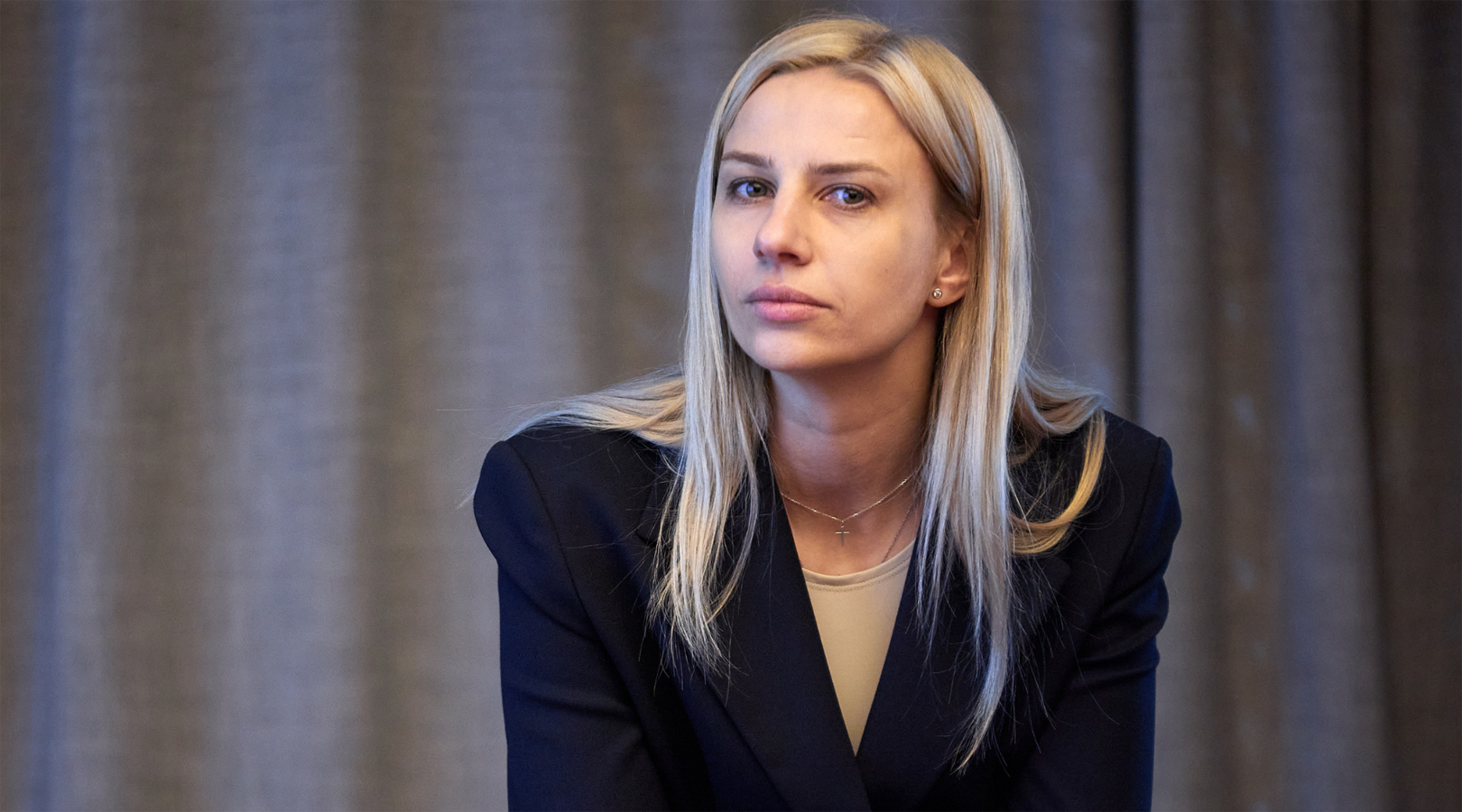
– How strong is competition between the developers and manufacturers who are willing to join the cluster?
– There is no competition because we are pursuing an open-door policy. Where a team applies for grant support, it goes through a series of mandatory screening checks to make sure it has no ties to the adversary, and the product it offers is subjected to an examination by military experts, which is then evaluated by scores. After successful checks, the applying company becomes a member of the platform and can apply for a grant. It will then face an evaluation by an unrelated expert team, and the decision on funding is made by the supervisory board.
To date, Brave1 has already provided in excess of 500 grants worth total over UAH 2.2 billion to technology developers. The next stage of our cooperation is product testing. During demo days, military users have the opportunity to trial new products in realistic mission scenarios. After these innovative products are successfully tried out at a testing ground, they are then tested in a combat environment. Feedback from military users is invaluable. This is what helped Ukraine rapidly come to the forefront of defense innovation and evolve into the world’s most dynamic defense technology hub.
Today, everyone is learning from us, learning how to deploy defense tech on the frontline. And here, a lot obviously depends on manufacturers, on teams that are ready and willing to move forward quickly based on this feedback.
WHERE THE MONEY FOR WEAPONS PROCUREMENT COMES FROM
– What budget does the Brave1 cluster have for 2025? What is the amount of grant funds its members can count on?
– For this year, we have a budget of UAH 650 million in government funding to provide grant support for projects, plus a special fund worth over UAH 2 billion to provide funding for additional competitions requested by the security and defense sector.
Last year, UAH 1.5 billion was appropriated for Brave1 from the national budget, and this grew to UAH 2.9 billion in funding for this year. I sincerely believe that without the financial support program that we launched in 2023, we would not have seen that rapid technology growth. Lots of companies are grateful for the grants that we provided, which enabled them to create and test prototypes, and then solicit investment in production scale-up.
Right now, we are restarting the Brave1 grant program. Thus, manufacturers will be eligible for UAH 500,000 to UAH 8 million in grant funding for developing new products that have to potential to become game-changers in the domains of unmanned aerial vehicles (UAVs), electronic warfare, ground robotic platforms, artificial intelligence, ammunition, missiles, etc.
– What amount of private investment has been raised through the Brave1 platform since its foundation?
– USD8 million in 2023 and 40 million in 2024. For this year, we are projecting to raise $100 million worth of investment. Thanks to the demo days that we organize, the Brave1 cluster currently has on its portfolio more than 290 investors from 35 countries from across the globe, who are generously investing in Ukrainian startups. More than seven dozen companies received funding from investors last year. Whereas initial investments did not go higher than $20-30,000, nowadays there are publicly-known projects worth $3-5 million, and there are non-public ones that surpass $10 million.
Two years ago, when we were urging foreign companies to invest in the defense tech sector in Ukraine, little were taking us seriously. And today, as you may know, our asset inventory includes the money from 35 countries. Most of them are angels of investors. But foreign venture funds too are operating fairly actively.
– What makes such investments promising in the eyes of investors?
– Ukrainian technologies obviously generate much interest from foreign countries. True, military exports are currently banned, but it’s a matter of time when the ban will be lifted. It will be lifted anyway, and this will contribute to our future as an exporting nation, considering the efficiency, price tag, capabilities of Ukrainian manufacturers and the experience in using these products.
That said, where a company makes a cool product, has government contracts, earns money, it’s definitely it will continue developing new technologies after the war ends. Furthermore, most companies reinvest the revenues they earn in R&D and production scale-up capabilities.

FOCUS ON THE NEEDS OF FORCES ON THE BATTLEFIELD
– What lines of funding does Brave1 currently prioritize?
– Currently, this is the development of technologies for missiles, laser-driven weapons, drone carriers, underwater drones, explosive mixtures and substances, plus everything else related to the use of artificial intelligence (for example, drone swarms). Alongside that, we also provide grants for development of particular types of UAVs and ground robots, in other words, in everything that will provide us an edge over the adversary on the battlefield.
– Are there manufacturers of parts and components among the cluster’s members?
— Of course, there are. Realizing the country’s reliance on supply chains, businesses are adapting to this too. Recently, Ukraine has built the first 1,000 drones that are 100 percent assembled of the parts and components manufactured domestically in Ukraine. Initially, in response to the demand, we started up FPV drone production lines, and currently we are launching production lines for FPV drone components. And this is a highly illustrative story, in particular, for partner countries that can see how we are building and scaling up our own production capabilities.
– What can a member of the cluster hope for in the event its product is endorsed for operational use?
– We are interested in that manufacturers continue improving their products. We invite them to testing grounds, conferences, exhibitions. We facilitate them to obtain regular feedback from military users, find new partnerships and collaborations with other manufacturers, develop new R&D capabilities, and, also, attract investments where necessary. In other words, they are constantly in our field of vision.
– How does your institution facilitate the conclusion of contracts between manufacturers and the Ministry of Defense?
– We maintain the highest possible level of integration with the Ministry of Defense and the Defense Procurement Agency where it comes to cutting-edge technologies. We work together to develop innovative testing techniques, provide manufacturers with templates of working design documentation to enable their new products to pass expert examination and receive a NATO code. We constantly invite representatives of the Ministry of Defense, the General Staff, and the Defense Procurement Agency to attend testing sessions at our proving grounds and meetings with manufacturers. Brave1 provides the Ministry of Defense and the Defense Procurement Agency with databases on the manufacturers of the codified products that have successfully passed field trials, and then the Ministry of Defense takes on the job of concluding government procurement contracts.
– What kind of challenges are currently faced by defense tech product manufacturers?
— In my opinion, the main challenge is when numerous companies have already boosted up their capabilities, but budgets remain to be limited. Manufacturers have the capability to produce and supply more, but not everything is contracted for various reasons. It is therefore time for the industry to devise a flexible mechanism for contracting. That is to say, we need contracts that will allow us to make manufacturers confident in contracting on the one hand, and make possible the technology product continues to be improved on the other. To ensure this, it is necessary to set up a mechanism that would enable requirements and specifications documents to be rapidly updated while relevant government contract is already in progress. Because it every so often takes too much time for a product to reach the battlefield after it passes through product codification procedure, and it is too often the case that the technology involved in that product already needs to be updated and upgraded before it even reaches the user on the battlefield.
Another serious challenge is developing an understanding of what to work on today in order to be able to meet the battlefield needs of tomorrow. In this context, it is crucial to for us to remain in constant communication with members of the military community who are working directly with technologies.
Lots of countries are currently reviewing their own weapons systems looking at Ukraine as an example to emulate. They have already realized that warfare has entered the phase of technological confrontation where combat operations of particular types can now be conducted with more cost-effective and efficient means. But believe me, there still remain lots of domains, ideas that need to be addressed.
– Is the missile program among these domains?
– We are closely involved in the development of this program by providing funding among other things. Whereas there were just a handful of manufacturers as of the Fall of last year when we got involved, barely four to five months passed and they grew in numbers significantly.
– Which of the cluster’s investments proved the most effective in these two years? Which of the cluster’s products became game-changers on the battlefield?
– I believe that most of the products have their important role to play. And you can’t compare them in terms of the importance of the role they play, whether it is an electronic jamming system for trench warfare or a ground robotic platform for evacuation of wounded casualties from the battlefield, or an interceptor drone that can shoot down reconnaissance or strike drones. Everything is important. Fiber-optic controlled drone technologies are currently being developed. Whereas the fiber-optic control capability was once limited to a range of five kilometers, it has now extended to twenty-plus kilometers. Everything is developing rapidly.
With the availability of a broad diversity of advanced technologies, our forces can fight with what works most effectively. Nowadays, brigades have their own funds to spend, making them free to choose by themselves what best meets their needs instead of having to choose from what they are offered. In an existential war, I personally do not want our heroes to fight only with what they are offered, but I want to see them provided with effective and innovative solutions. This so-called “zoo of technologies” enables each brigade to provide itself with the capabilities and technologies it believes will meet its needs and goals to best effect.
– In actual fact, that means to say that the government is losing its monopoly on defense production.
– That’s true, indeed; we can see how the Private sector market is giving odds to State-owned industries. This all started with $5 thousand, which we issued in grant support. And now I can see how these grants pushed the market development to the next level. We heard from numerous teams that they appreciated these $5,000 grants as a sign from the government that they are needed, can be useful, and this motivated them not to stop but to continue developing. We just went and kicked down the door that was closed to businesses.
Interviewed by Yulia Abakumova, Kyiv
Photo: Yevhen Kotenko and via Brave1 press office
Source: Natalia Kushnerska, CEO at the Brave1 defense tech cluster


